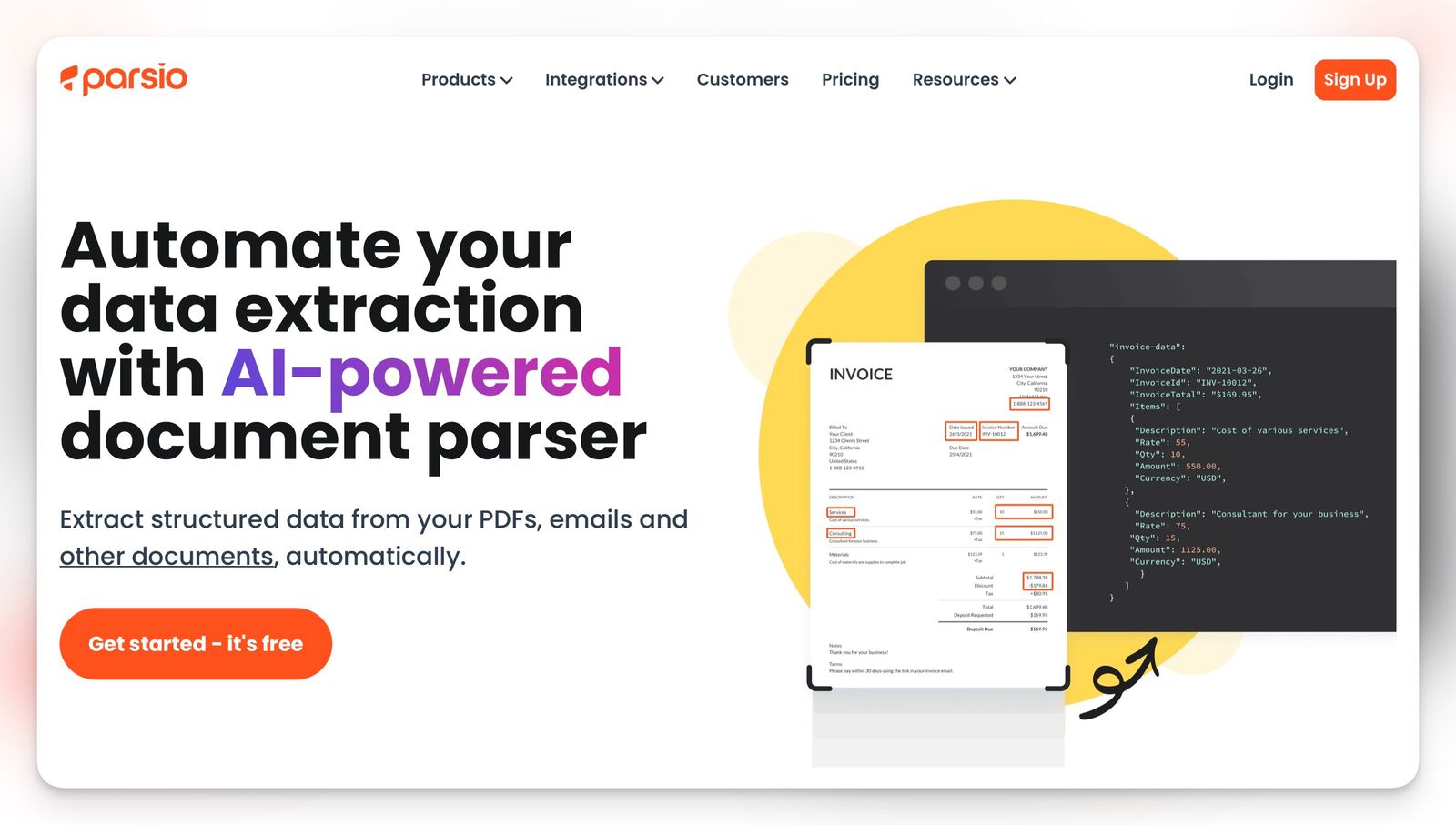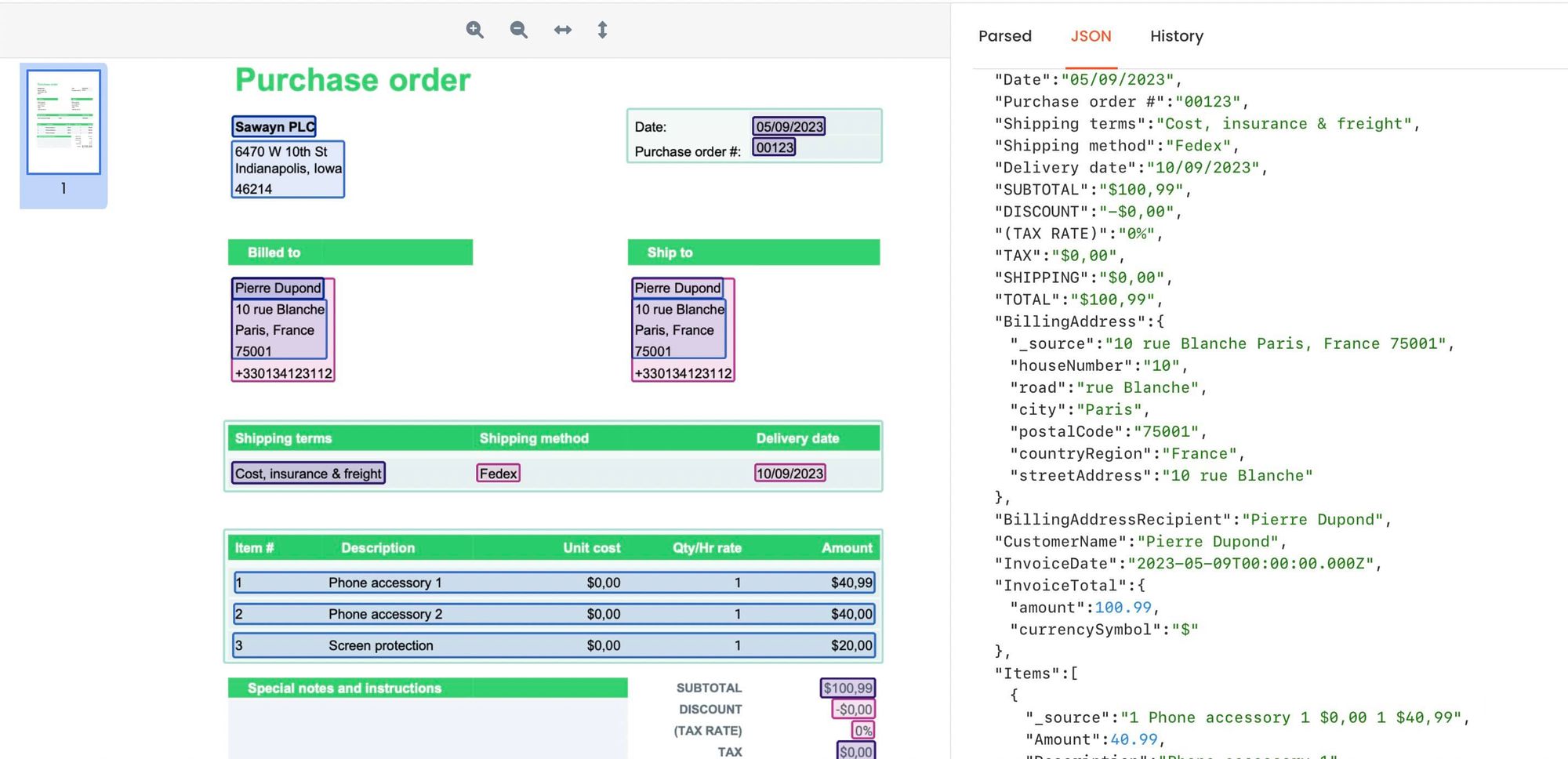Automating Purchase Orders Data Extraction: A Comprehensive Guide
Explore how AI and Machine Learning are revolutionizing procurement by automating data extraction from purchase orders. Say goodbye to manual errors and hello to efficiency, accuracy, and speed in your procurement processes.

In the business of buying and selling, purchase orders (POs) are crucial. They act as legal agreements that spell out what items are being bought, in what quantities, and at what prices. Traditionally, managing these orders has been a time-consuming task that's also prone to errors. But technology is changing that.
Thanks to advancements in Artificial Intelligence (AI) and Machine Learning (ML), businesses can now automate the process. This means that the data from POs can be automatically pulled and organized, saving time and reducing the chance of mistakes. As a result, companies can make their buying process more efficient, accurate, and fast.
What Is a Purchase Order?
A purchase order is an official document issued by a buyer to a seller, indicating types, quantities, and agreed prices for products or services. It serves as an offer to buy products or services and becomes a legally binding contract once the seller accepts it.
In most cases, the PO process begins when a need for a product or service arises in an organization. An employee creates a purchase requisition and converts it into a purchase order once approved. The purchase order then gets sent to the seller, who, upon acceptance, fulfills the order and sends an invoice to the buyer.

What Data Does It Contain?
A purchase order contains crucial data buyers, and sellers need for smooth transactions and clear communication. This data typically includes:
PO Number: A unique identification number assigned to each purchase order for tracking and reference purposes.
Vendor Details: Information about the seller, including the name, address, contact details, and any specific vendor code, if applicable.
Buyer Details: Information about the buyer, such as the name, address, contact details, and department or unit within the organization.
Order Details: Detailed descriptions of the products or services being purchased, including item numbers, quantities, unit prices, and total cost.
Shipping Details: Information about shipping, such as the shipping method, delivery date, shipping address, and any associated costs.
Payment Terms: The agreed-upon terms for payment, including the payment method and timeline.
Manually extracting and processing this data can be time-consuming and prone to errors. But thanks to advanced AI technologies, businesses can automate this process, significantly improving their efficiency and accuracy.
Difference between a PO and an Invoice
While both purchase orders (PO) and invoices are critical documents in the procurement process, they serve different purposes and are used at various transaction stages.
A purchase order is generated by the buyer and sent to the seller. It outlines what products or services the buyer intends to purchase, specifying quantities, prices, and delivery details. It essentially acts as a formal offer to the seller. Once the seller accepts the purchase order, it becomes a legally binding contract between the buyer and the seller.
On the other hand, an invoice is a document issued by the seller to the buyer after the goods or services have been delivered or performed. It stipulates what the buyer owes the seller for the provided goods or services. An invoice typically includes the quantity of goods delivered, a detailed description of the goods or services, their prices, and the total amount due.

The main difference between the two lies in their usage: A PO is used to initiate a transaction and prevent miscommunication, while an invoice is used to request payment and maintain financial records.
Automating PO Data Extraction: What Is the Goal of Automation and Its Benefits?
The primary goal of automating purchase order data extraction is to reduce the time and effort spent on manual data entry, enhance accuracy, and increase overall process efficiency.
Here are some key benefits of automating PO data extraction:
1. Increased Accuracy
AI-based data extraction systems reduce human error, ensuring accurate data extracted from purchase orders. This accuracy is critical as it directly impacts financial records and inventory management.
2. Improved Efficiency
Automation speeds up the data extraction process significantly, allowing organizations to process high volumes of POs in a short time. This efficiency enables faster order processing and fulfillment, leading to improved customer satisfaction.
3. Cost Savings
By reducing manual labor, automation brings substantial cost savings. According to a report by McKinsey, automation could save businesses $2 trillion in global workforce costs.
4. Better Compliance
Automated systems ensure that every data point in the PO is captured accurately and consistently, leading to better compliance with internal policies and regulatory requirements.
5. Enhanced Analytics
Once data is extracted and structured, it can be easily fed into analytics tools to provide valuable insights for decision-making. For example, companies can analyze their spending patterns, vendor performance, and more.
Automating PO data extraction is not just about replacing manual labor with technology. It's about transforming procurement processes to drive efficiency, cost savings, and actionable insights. With these advantages, it's clear that automation is the future of PO data extraction.
Parsio: A Reliable Solution for Purchase Order Automation
In the realm of procurement automation, Parsio has emerged as a leading solution. Using advanced Artificial Intelligence (AI) algorithms, Parsio streamlines the process of extracting structured data from purchase orders, significantly increasing efficiency and reducing human error.

One of Parsio's key features is its Optical Character Recognition (OCR) technology. This technology enables Parsio to read printed text in documents, effectively turning unstructured data into a structured format that can be easily used and analyzed. The OCR capability also extends to handwritten text, which is particularly useful when dealing with physical documents that have been scanned or photographed.
Parsio's AI has been trained on a multitude of documents, ensuring that it can accurately extract data from a variety of formats, including PDFs, scanned documents, and photographs. This broad capability is essential for businesses with diverse document types and sources.

The platform also supports multiple languages, making it an ideal solution for international businesses. Whether your purchase orders are in English, Spanish, French, German, Portuguese, Bulgarian, or any other language, Parsio can extract the necessary data accurately.
Once Parsio has extracted the data, it can be exported to various formats and applications. One popular choice is Google Sheets, where the data can be easily viewed, edited, and shared. However, Parsio's flexibility allows it to integrate with many other applications using automation platforms, allowing users to choose the workflow that best suits their needs.
Here are some of the features highlights that make Parsio one of the most innovative solutions for automating Purchase Order processing:
- It can import data in any format or from any source including emails and documents such as PDF, HTML, XLSX (Excel), and much more.
- It can help simplify workflows and operations by offering complete automation to handle file imports, data validation, extraction, exports, and integrations.
- It reduces time spent on inefficient manual tasks and takes only a few minutes to set up your own fully automated document parser.
- Its advanced OCR and AI capabilities can extract data with optimum accuracy and reliability.
- It is scalable to meet the growing needs of businesses.
The Final Verdict
In summary, automating purchase order processing with AI offers numerous benefits to businesses. It can significantly reduce the time and cost involved in manual processing, minimize errors, and improve accuracy. AI-powered systems can also provide valuable insights into purchasing patterns and help identify opportunities for cost savings.
Moreover, Parsio represents a significant step forward in procurement automation. Its combination of AI, OCR, and flexible data export capabilities offers a comprehensive solution to purchase order data extraction challenges. By leveraging Parsio, businesses can transform their procurement processes, achieving new levels of efficiency and accuracy.
